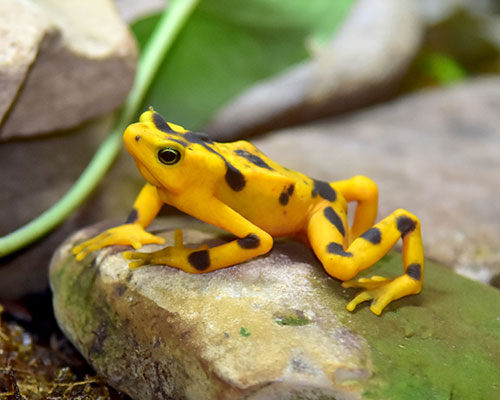Panamanian Golden Frog
(Atelopus zeteki)
Panamanian golden frogs are a bright golden-yellow color with some darker spots. The Zoo’s Panamanian golden frogs reside inside the CRE Building.
Animal Facts
Although Panamanian golden frogs are called frogs, they are scientifically classified as true toads.
These frogs communicate by waving their hands instead of croaking.
Panamanian golden frogs are considered lucky in Panama.
Panamanian golden frogs are poisonous, secreting a water-soluble neurotoxin.
In wet habitat, the frogs can weigh twice as much as those living in dry habitat, 12 to 17 grams compared to 3 to 7 grams.
Diet
Very small insects comprise the diet of these frogs.
Status in The Wild
- Critically Endangered
International Union for Conservation of Nature (IUCN) Red List status
The Panamanian golden frog historically inhabits mountainous rainforests and streams in Panama, but is believed they could be extinct in nature at this time.
Panamanian golden frogs are under pressure from loss of habitat, over collection and chytridiomycosis. Some scientists suspect that the Panamanian golden frog has been extinct in its natural range since 2006. Seneca Park Zoo is part of a larger conservation effort for these frogs, known as the Species Survival Plan (SSP).


